Topeka-area bird watchers see wide variety of migrating species
It's all for the love of birds that a group from the Topeka Audubon Society bundled up Saturday morning to search for as many winged creatures as they can find.
Armed with binoculars and bird-identifying apps on their phones, the so-called "birders" congregated briefly at McDonald Field by the Shunga Creek before taking off down the Orville O. Rice Memorial Nature Trail.
"We do the bird walk the second Saturday of every month except December. And we always do it here, same time, same Saturday," said Audubon Society president Sue Newland.
The walk in the park only had one goal: to identify any birds they hear or see.
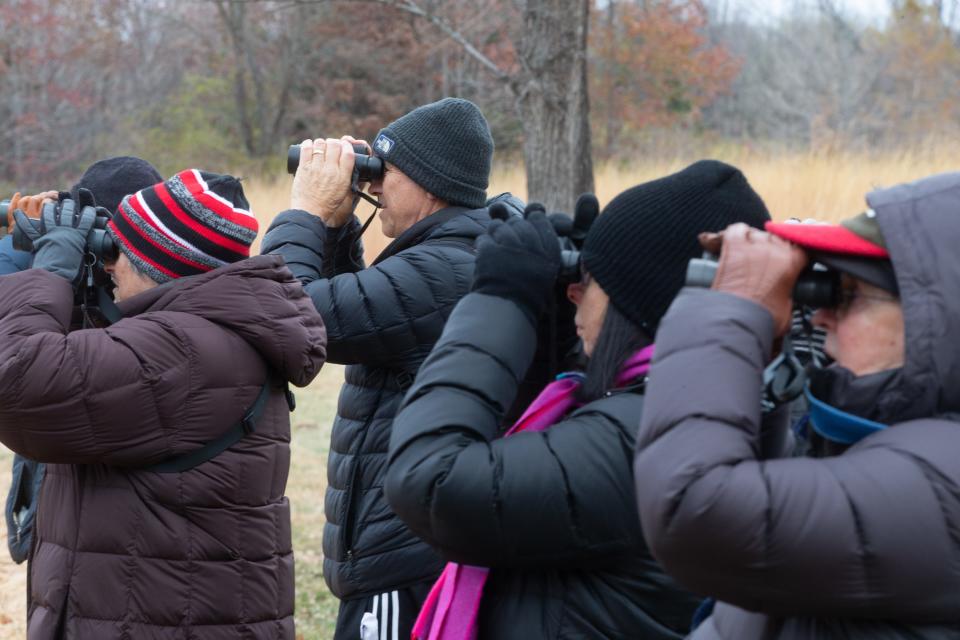
"You really don't have to have too many skills," Newland said. "If you want to become a serious birder you start learning the songs, the sounds they make, all the different plumages they might have over the seasons — stuff like that."
Migrating birds stop through Topeka area
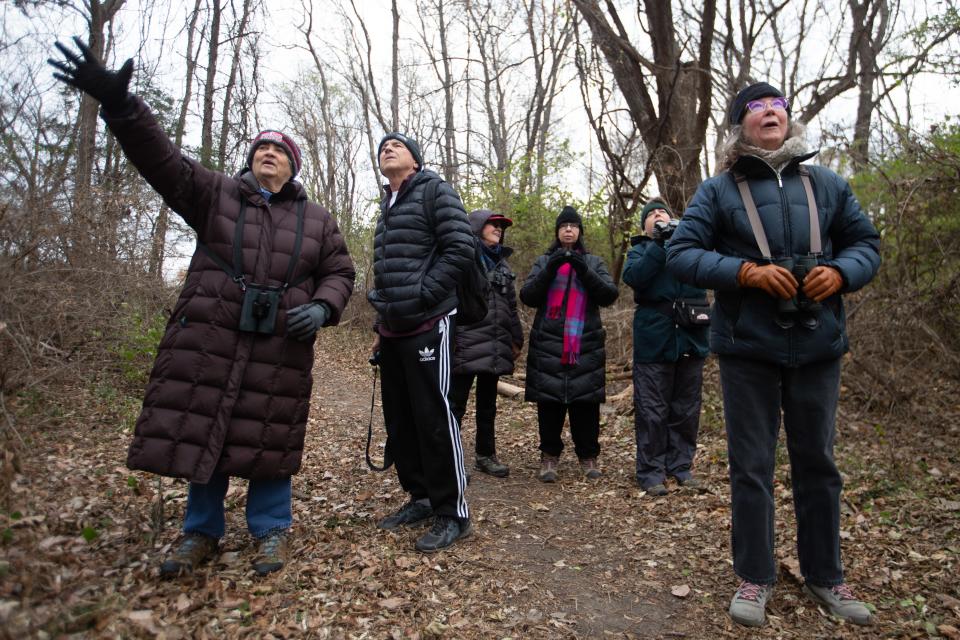
In Topeka — and all of northeast Kansas — there are numerous areas where migrating birds take refuge as they travel north and south in the fall and spring seasons.
Large basins of water attract such larger birds as pelicans and herons, which have been spotted frequently at Lake Perry.
Carol Morgan, newsletter editor for the society, said there are specific varieties of birds can be spotted seasonally.
"There are some birds you will only see here in the winter," Morgan said. "Like yellow bellied sap sucker, always a fun name to say."
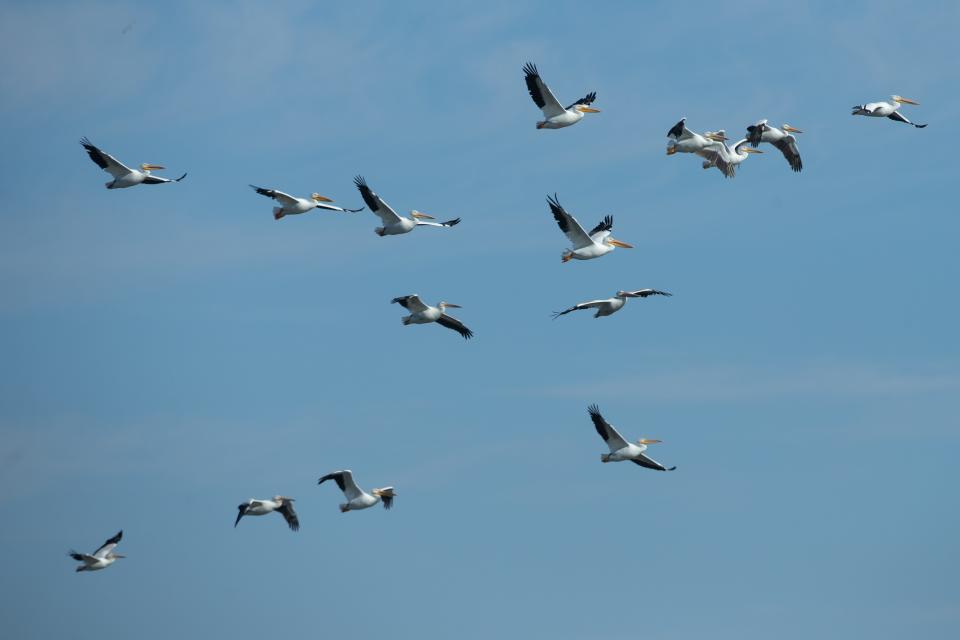
More:Birds flying high, do you know how they feel? New app reveals migration routes, dangers.
Back in 2018, a rare sighting of a swallow-tailed kite brought many birders to Kaw River State Park.
The community of bird watchers help in keeping track of the species they see by sharing their spotting on Facebook groups and logging data into apps. In Kansas, some of the universities offer classes in ornithology, or the study of birds, as well.
Backyard bird watching allows wide variety to be seen
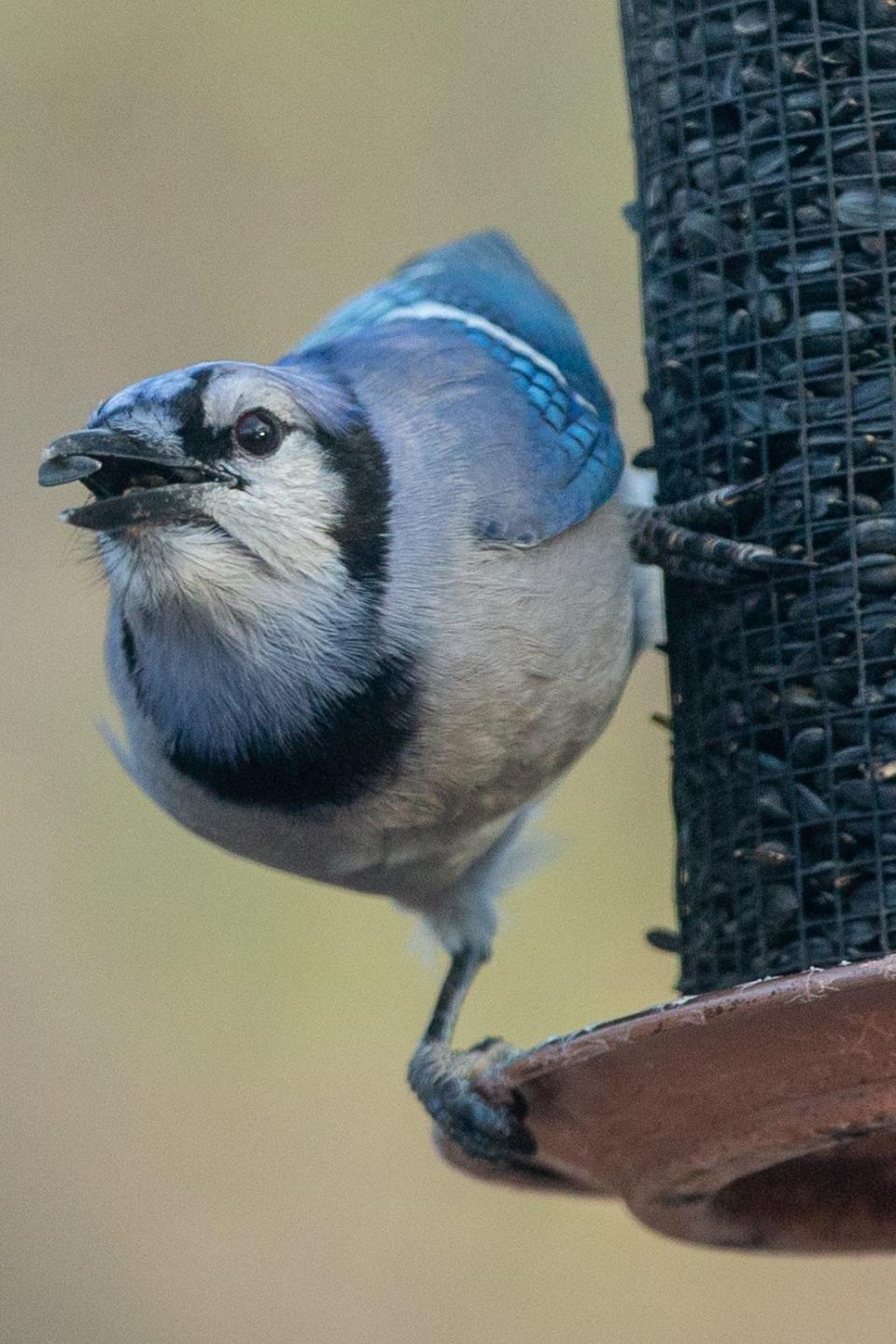
For many, the easiest way to enjoy the birds are to simply leave out some bird seed and let the birds come to you.
Randy Carman, a board member of the Topeka Audubon Society on Saturday's walk, said seeing the enjoyment his mother had in bird watching started his fascination early on.
"My mom was a backyard bird watcher when I was a little kid, and I just expanded out from that," said Carman. "I can remember her waking me up in the morning and say, 'Listen to the cardinals singing,' and you know she just loved having birds around."
More:Topeka-area awash in color as tree leaves show changing of the seasons
How to get involved in Topeka Audubon Society
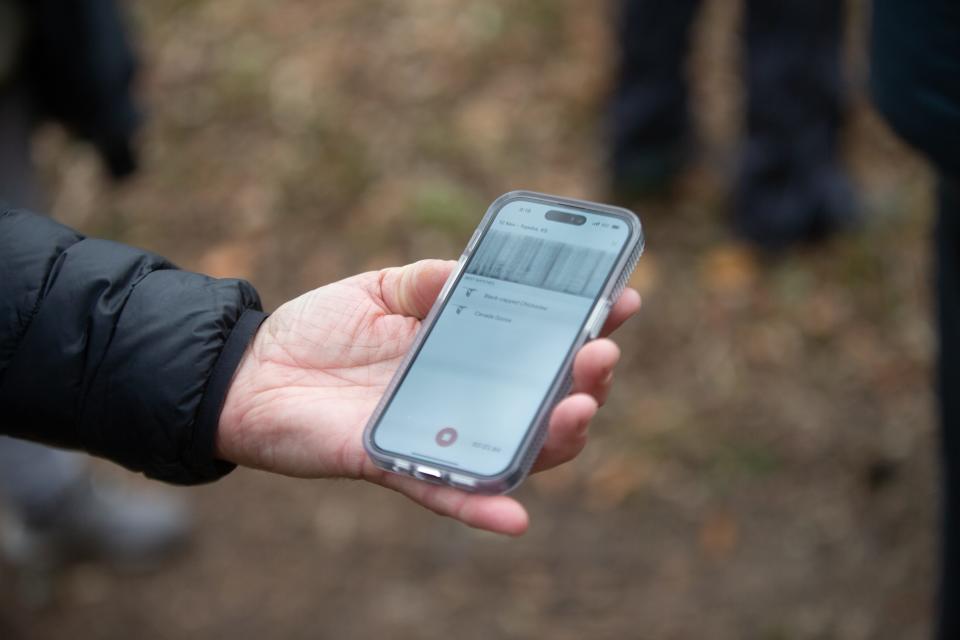
Unlike humans, birds don't have the benefit of a centralized government collecting census data to see how their populations are changing. That's when local and national Audubon societies step in.
Each December since 1947, the Topeka Audubon Society has hosted its annual Christmas Bird Count, or CBC. The count helps to estimate what types of birds are present in the area and corresponds with over 2,500 other CBC events held in North, Central and South America during the season.
As well as the monthly bird walks, and Christmas count, the society also hosts field trips that are free to the public. To get involved with the society or learn more about their events, go to the Topeka Audubon Society website.
Events not only are bird specific, but the society's mission statement also includes conservation of all natural habitat.
More:How to help disappearing monarch butterflies during migration through Kansas
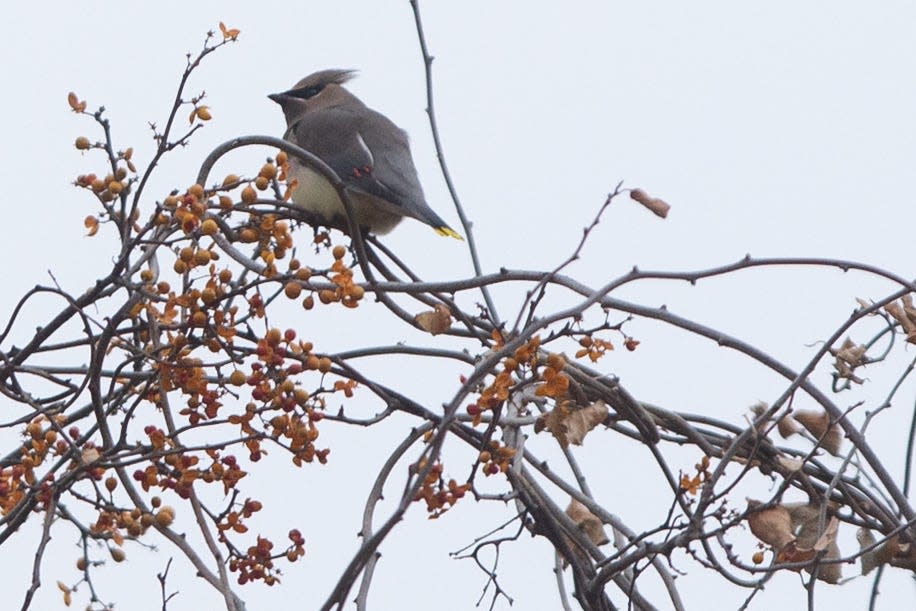
"Our last topic was about wasps and conservation of that species," said Morgan.
"They're part of the ecology, and it's important to help promote the whole ecological circle of life," she said. "We emphasize birds, but we would want to see the habitats that support birds be conserved, so we have birds far in to the future."
Outside of organized events, those with a smartphone and an internet connection can help in keeping track of their own bird spotting. Applications developed by Cornell University — such as Merlin Bird ID and eBird — use sophisticated technology to analyze and ID the birds seen or heard in the area.
Evert Nelson can be reached at enelson@cjonline.com or 785-231-9565.
This article originally appeared on Topeka Capital-Journal: Birders in Topeka area, northeast Kansas, identify migrating birds

